Radiant Lines by Asif Khan creates rings of light in Melbourne's Federation Square
Pulsing rings of light traced the movement of visitors to this installation in Federation Square, Melbourne, by architect Asif Khan – who this week became the first architect to pick up a Grand Prix at the Cannes Lions awards (+ movie).
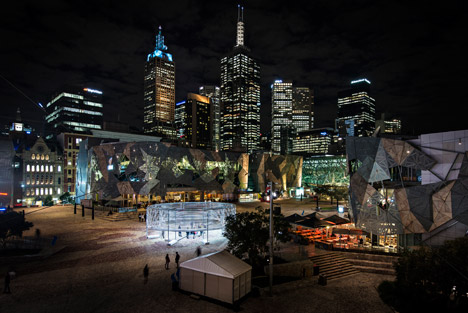
London-based Asif Khan – whose MegaFaces installation at the Sochi Winter Olympics earned him the Innovation Grand Prix at the Cannes Lions International Festival of Creativity – developed the Radiant Lines project as part of Melbourne's Light In Winter Festival.
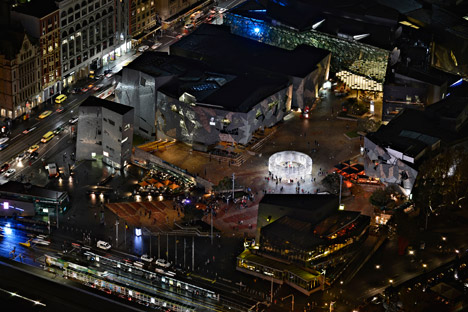
The circular structure was built from 40 rings of raw aluminium, which were suspended above the ground to allow visitors to walk underneath them, but were also layered over one another to create a moire effect.
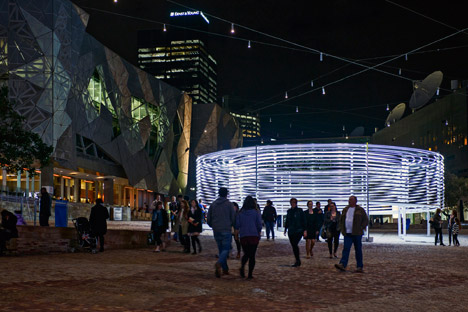
As visitors approached, their movements were picked up by a sensor that translated physical presence into a pulse of light that darted around the "aluminium lines" that formed the installation's perimeter.
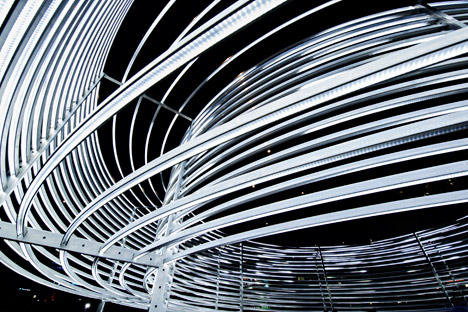
"It was important to not only to create a mark on the environment with the pavilion, but to also allow the public to feel that they had too," Khan told Dezeen.
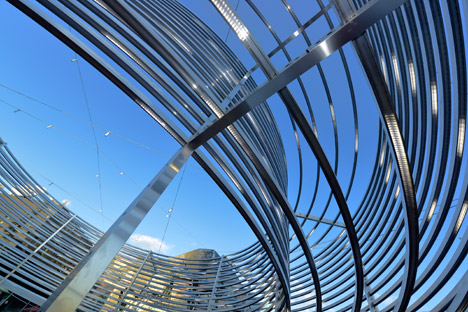
"It was a surprise to me how long people stayed within the lines – it felt simultaneously like a moment of retreat from the busyness of Melbourne, yet it captured that energy and concentrated it into something that people were content to engage with for long periods of time," he said.
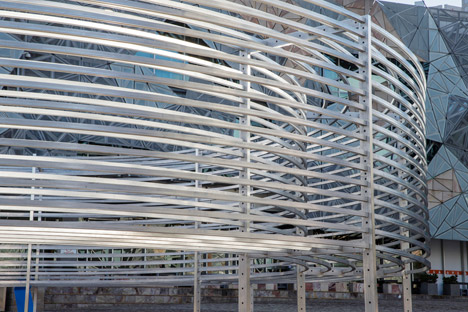
Working in collaboration with engineer AKT II, Khan used approximately two kilometres of aluminium to create each of the rings. A diffuser sat within the structure, allowing light to move smoothly across the metal surfaces.
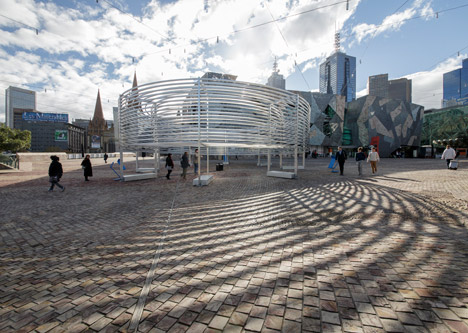
"We decided to make the structure from aluminium for several reasons: lightness, local production and capability of extrusion," Khan explained. "This decision created great opportunities to integrate structure, light-diffusion performance and containment routes for the wiring in one extrusion die design."
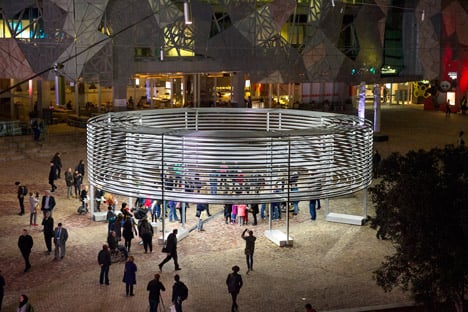
"We wanted our aluminium lines to have minimal deflection when supported at either end, and at the same time have an integral light diffuser. We made many physical tests of the extrusion to understand how light diffusion performance could be increased without the need for a traditional diffuser, whilst maintaining an extrusion that performed well structurally," he said.
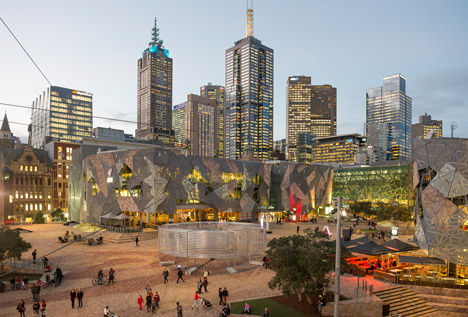
Radiant Lines was in place from for three weeks at the centre of the Federation Square – a site chosen by Khan for its regular footfall.
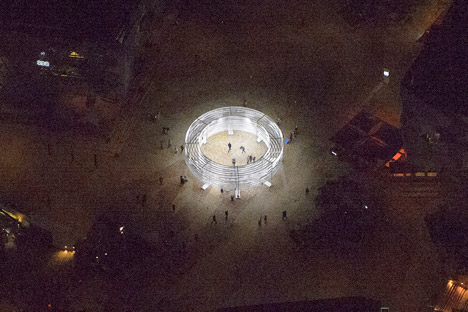
"Because of the sloping terrain of Federation Square, we were able to create a relationship with the ground whereby on only one side could you could walk straight under the structure. Watching people visit the square, we noticed how people preferred to take a route where they would have to duck," he added.
Movie is by Keith Deverell.